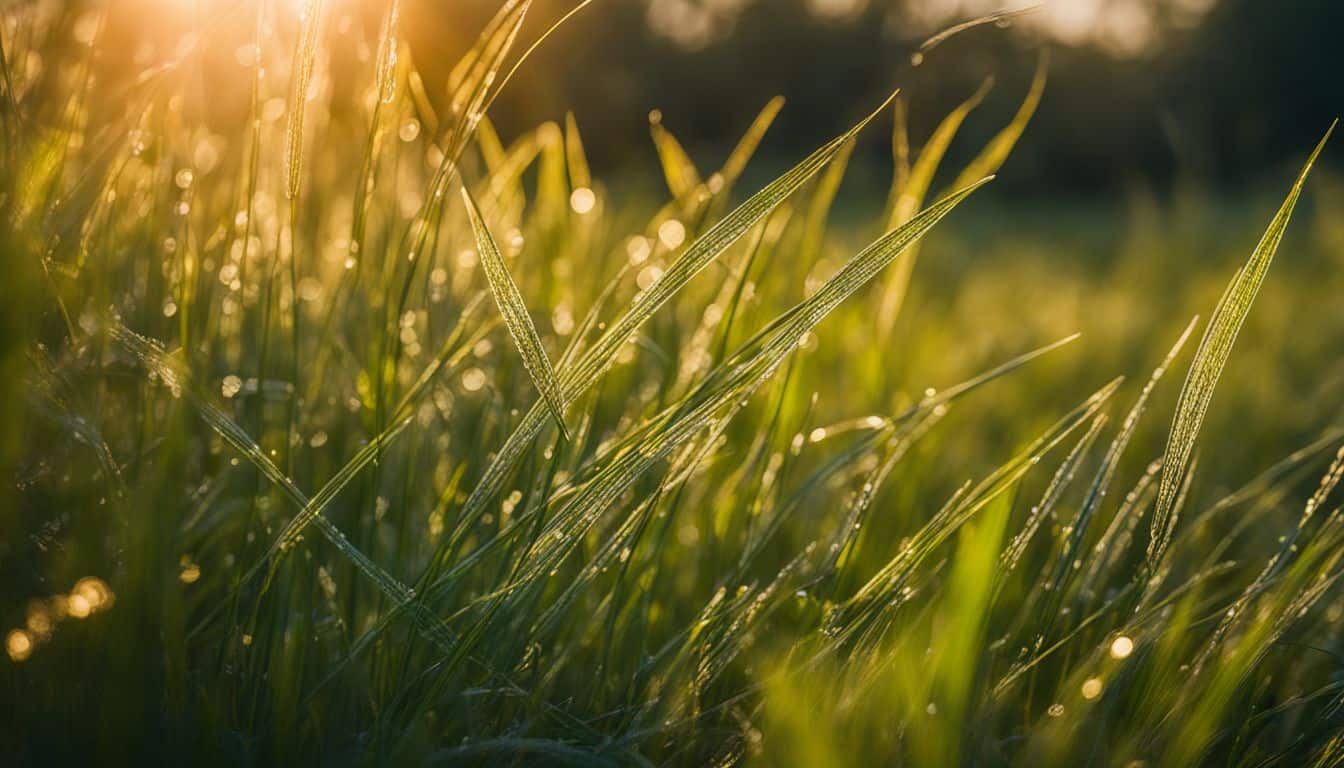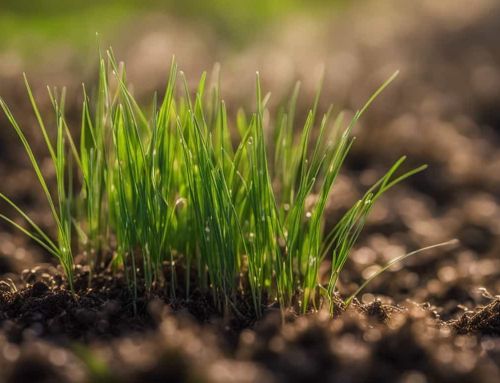Planting grass seed at the right time is absolutely crucial. You might fall into the trap of thinking summer is the prime time for this, but in truth, early autumn or mid-spring are your golden tickets.
This careful timing makes sure your grass has the absolute best chance to develop robustly before it must face the challenges of extreme weather, be that scorching heat or biting cold.
The guidance we’re laying out here will help you make informed decisions for cultivating a lawn.
I’m Billy Nimmo, at your service, founder of Idealseed and with 30 years under my belt in the seed trade. My journey from spearheading a modest enterprise to steering the UK’s top choice for premium seeds provides me with a unique perspective; I’m not just sharing advice – I’m passing on wisdom gleaned from experience.
Ready to give your lawn a proper start? Let’s embark on this journey together towards nurturing lush greenery outside your doorstep.
Key Takeaways
- The best time to plant grass seed is in early autumn or spring because this allows the seeds to grow with enough rain and cool weather.
- Preparing the soil properly before sowing is vital. This includes weeding, adding compost, and ensuring the soil isn’t too compact.
- Choosing high – quality seeds that match your garden’s needs can prevent common issues like weed growth and patchiness.
- Avoid common mistakes such as planting seeds too deep, watering incorrectly, or sowing at the wrong time to ensure a healthy lawn.
- Using specific methods for sowing, like splitting seeds into two parts for even distribution and using a spreader, helps achieve a lush garden.
Ideal Time to Plant Grass Seed
The best time to plant grass seed is in early autumn or spring. This way, the seeds grow well with enough rain and cool weather that helps roots get strong before summer comes.
Sowing in Spring
Spring sowing works well because the soil warmth helps seeds grow. This season lets me use all my experience to match seed types with garden needs. I pick from general-purpose, luxury, or shady options depending on where they’ll live.
Spring’s mild weather and good soil temperature make it a friend for starting new lawns. It gives seedlings time to get strong before winter comes.
Spring is nature’s way of saying, ‘Let’s grow!’
I’ve learned that preparing the ground right before planting makes a big difference. Clearing weeds early and mixing in compost helps seeds start strong. After spreading seeds, regular watering keeps them healthy without making puddles.
Watching new grass come up in spring reminds me why I love doing this work so much.
Planting in Autumn
Autumn is the best time to plant lawn seeds. From September to November, conditions are ideal. The soil is still warm from summer. This warmth helps seeds grow fast. Seedlings get strong before the first hard frosts hit.
Before you sow, prepare the ground well. Remove all weeds, especially those that last year after year. Add compost to keep moisture in and give your new green carpet a boost with fertiliser.
This makes your soil perfect for growing thick and healthy grasses or wildflowers, ready for a lush spring display.
Preparing the Ground for Grass Seed Sowing
Before you start sowing grass seed, getting the ground ready is key. You need to fix the soil, make it smooth and ensure it’s not too hard. This makes sure your new grass can shoot up well and form a strong root system beneath.
Preparing the soil for a new lawn
To get the best results, prepping your soil correctly is vital. Here’s how to do it properly:
- Clear the area: Get rid of all weeds and debris from the site you’re planning to turn into your new lawn.
- Test the soil: Check your soil’s health. You may need to add nutrients or adjust its pH level.
- Break up compacted earth: Use tools like a fork or rotavator to loosen hard soil. This step helps roots grow deep.
- Improve soil quality: Add compost or well-rotted manure to enrich the earth.
- Smooth the surface: Use a rake to create a level ground. Remove any large clumps or stones you find.
- Firm the soil lightly: Walk over the area or use a garden roller gently. This step makes sure seeds make good contact with the soil but avoids making it too hard for seedlings to break through.
- Water the prepared area if it’s dry, using a fine spray to moisten it thoroughly without causing erosion or washing away topsoil.
Each of these steps ensures your new grass has everything it needs right from the start, leading to stronger growth and a healthier lawn.
Preparing for Over Seeding an Existing Lawn
Over seeding an existing lawn helps fill in bare spots and makes the grass thicker. Here’s how I do it:
- Mow the grass short: Cut your lawn shorter than usual to allow seeds to reach the soil easily.
- Rake the area: Use a garden rake to remove dead grass, leaves, and other debris. This step helps seeds contact the soil better.
- Check for compacted soil: Walk around your lawn. If it feels hard, break up compacted areas with a fork or aerator tool.
- Choose quality seed: Pick a seed mix that matches your current lawn type for best results. Good seeds mean less weed and patchy growth.
- Spread the seed: Use a spreader to evenly disperse seeds across the lawn.
- Water lightly: After seeding, use watering with a fine spray to moisten the seeds without washing them away.
- Care for new shoots: Keep foot traffic low on new grass and water regularly to help young plants grow strong.
This process gives your lawn a fresh look and stronger growth by adding new life to it through careful preparation and choice of good seeds.
How to Sow Grass Seed
To sow grass seed, first pick the right type for your lawn. Then use a method that spreads the seeds evenly across the soil.
Choosing the Right Seed
Picking the right seed is key. You have choices like general-purpose lawn, luxury lawn, or mixes for shady places. I’ve learned that good quality seed makes a big difference. It stops weeds and rough grass from taking over your garden.
A lush garden starts with choosing the high-quality seeds; it’s a lesson I’ve learned through years of trial and error.
I always tell folks to think about their garden’s needs before deciding. If you have lots of shade, go for a shady mix. For something soft underfoot, try the luxury lawn seeds. Remember, investing in better seeds gives you a healthier lawn.
Sowing Method
I have years of experience sowing grass and wildflower seeds. Here’s how I do it right every time.
- Measure the seed amount correctly. You need to know how much seed your lawn area needs. Use a scale to weigh the exact amount. This ensures you cover the whole area uniformly without waste.
- Split the seeds into two parts. This trick helps in even distribution. You sow one part in one direction and the other part at a right angle to the first. It makes sure there are no bare spots.
- Use a spreader for even sowing. A broadcast or drop spreader works well for large areas, making sure seeds spread out evenly across the soil.
- Rake gently over the sown area. This mixes the seeds with the top layer of soil, hiding them from birds and improving contact with the soil.
- Watering is key after sowing. The soil needs to stay moist but not soaked during seed germination. I water lightly once or twice daily if there is no rain, especially during dry spells.
- Avoid heavy equipment on freshly sown areas to prevent seed displacement and soil compaction.
Through this method, I ensure good grass germination rates and even leaf growth across my lawn care projects, avoiding common mistakes like uneven distribution or improper watering which can lead to poor results.
Common Mistakes When Sowing Lawn Grass Seed
Sowing lawn grass seed seems simple, but small errors can stop your new lawn from growing well. Here are common mistakes you should avoid to ensure a lush, green garden.
- Not preparing the soil correctly: Before planting, it’s crucial to ready your soil. This means removing weeds and making the ground loose. If you skip this step, your seeds may not touch the soil well and won’t grow properly.
- Planting seeds too deep: Seeds need light to germinate. When buried too deep, they won’t sprout. A light cover with soil is enough to protect them while letting in sunlight.
- Watering too much or too little during germination: Seeds must stay moist but not flooded. Too much water can wash them away or cause rotting before they sprout.
- Using the wrong type of seed: Different types of turf grasses suit different conditions. It’s important to choose a seed that matches your climate and soil type for best results.
- Ignoring the right time to sow: Grass seeds grow best when planted at the right time of year – ideally in early autumn or spring when temperatures are mild.
- Leaving large gaps when sowing: Even distribution is key for a uniform lawn without bare spots. Using a spreader can help achieve an even cover.
- Forgetting about birds and pests: Birds might eat your freshly sown seeds if left unprotected. Use netting or burlap sheets to keep them off until the seeds germinate and start growing into strong plants.
Next up, let’s tackle how to care for your lawn post-sowing!
Conclusion
Choosing the right time to plant grass seed makes a big difference. Early autumn or mid-spring are your best bets. This timing helps plants get strong before extreme weather hits. Before planting, get the soil ready by weeding and adding compost.
Pick high-quality seeds to avoid unwanted grasses and weeds in your lawn. After spreading the seeds, watering them well is key for growth. My years at Idealseed have shown me that with careful planning and good care, anyone can grow a lush lawn.
Trust in quality seeds and follow these steps for success.
FAQs
1. What is the best time to plant grass seed?
The best time to plant grass seed is in early autumn or spring when the soil is warm and there’s more rain.
2. Can I use a rotary mower on new grass?
Yes, you can use a rotary mower on new grass once it’s grown enough, but make sure the blades are sharp.
3. How do I prepare my lawn for seeding?
Prepare your lawn by tilling the soil, removing weeds, and making sure the ground has furrows for seeds.
4. Should I worry about birds eating my grass seed?
Birds may eat some of your seeds. You can cover seeds with a thin layer of soil or use netting to protect them.
5. How often should I water new grass seeds?
Water new grass seeds gently but frequently, keeping the soil moist until they sprout and start to grow strong.
6. When can I mow my new lawn for the first time?
Wait until your new grass is about 3 inches tall before mowing for the first time with a cylinder mower or rotary mower set high.








